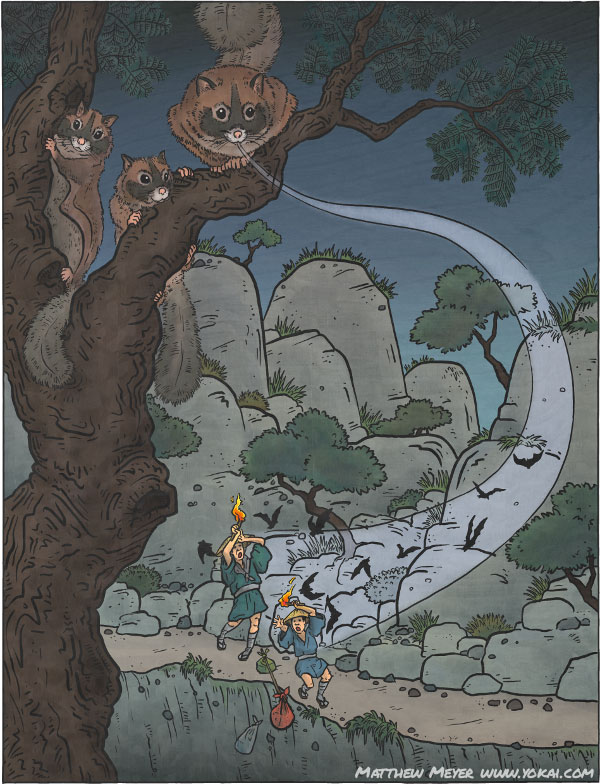One of the reasons that I wrote The Night Parade of One Hundred Demons a few years ago is that there are so few books in English that deal with Japanese monsters, and of the ones that do exist there are so few that really give them the treatment that they deserve. Fortunately, yokai have been growing in popularity over the last couple of years, and finally some very interesting English-language books have begun to come out. Yokai Museum is one of these, having just been released in the US last month. I got my hands on a copy the other day, and I thought I would introduce it on my blog.

Yokai Museum is just what it sounds like: a museum of yokai-themed artwork spanning hundreds of years of history, condensed into book format. All of these works come from the vast collection of Yumoto Koichi — yokai researcher, professor, and former curatorial director of the Kawasaki City Museum. The Yumoto Koichi collection is the world’s largest collection of yokai-related art, and while Yokai Museum doesn’t come close to covering the 3,000 items in the Yumoto Koichi collection, it does cover an impressive selection of more than 161 pieces, detailed in high quality full color photos. The 288 page book is bilingual, featuring English translations side-by-side with the Japanese text, making it doubly useful as a language study tool for anyone looking to practice their Japanese (or English, for that matter). The descriptions are written with people who are not intimately familiar with yokai in mind, so they don’t require much foreknowledge to enjoy (and it is primarily a picture book, with only small written parts, like the tags you would see at a museum on the wall next to a piece).
Yokai Museum is divided into six chapters covering various formats of yokai art that appeared over time: picture scrolls, books, woodblock prints, games, everyday items, and religious items. Chapter 1: Picture Scrolls – A Cast of Colorful Yokai begins with the oldest known piece of true yokai art: the Hyakki Yagyō Emaki scroll attributed to Tosa Mitsunobu. It then shows a large number of other scrolls, including detailed close ups, and goes over the history and development of the styles used in these paintings. Chapter 2: The World of Yokai Books starts with Toriyama Sekien’s Gazu Hyakki Yagyō and moves on to the “yellow cover” books and other kusazoshi printed material from the Edo period. Chapter 3: Nishiki-e – A World of Gorgeous Color features the beautiful and colorful woodblock prints from the golden age of ukiyoe. Images by Hokusai, Yoshitoshi, and other masters are included alongside other less well-known pieces. Pictures of Edo period color newspapers, large format tryptichs, advertisements, and other old images are beautifully reproduced here. Chapter 4: Yokai Games is full of toys and games of all kinds from the Edo period up until the Showa period. There are illustrated board games, card games, fold-up paper models, kamishibai, and beautiful, strangely crafted mechanical wooden toys that would probably give any kid today nightmares! Chapter 5: Yokai Lurking in Everyday Life contains pictures of everyday items including kimono, obi, and other clothes, dishes, bottles, netsuke, even knife handles and sword guards. Chapter 6: Yokai and Prayer features a large number of votive cards that feature illustrations of various yokai on them. There are also works of art with religious significance which once belonged to various temples.


I was surprised at just how pervasive the yokai influence actually got to be. While I have long been a fan of the old prints and paintings from the Edo period, this was the first time I had ever seen yokai-themed kimonos, and that just blew me away! And while I had seen yokai paintings, prints, and netsuke, before, the votive cards and toys that were created over a hundred years ago (and look like they could have been made today) were amazing.


My next book won’t be out until late next year, so if you are looking for some great yokai material to tide you over until then — particularly if you are interested in the artistic origins of yokai imagery — this is the book to get! Grab it on Amazon.com!
Yokai Museum is published by PIE International.







